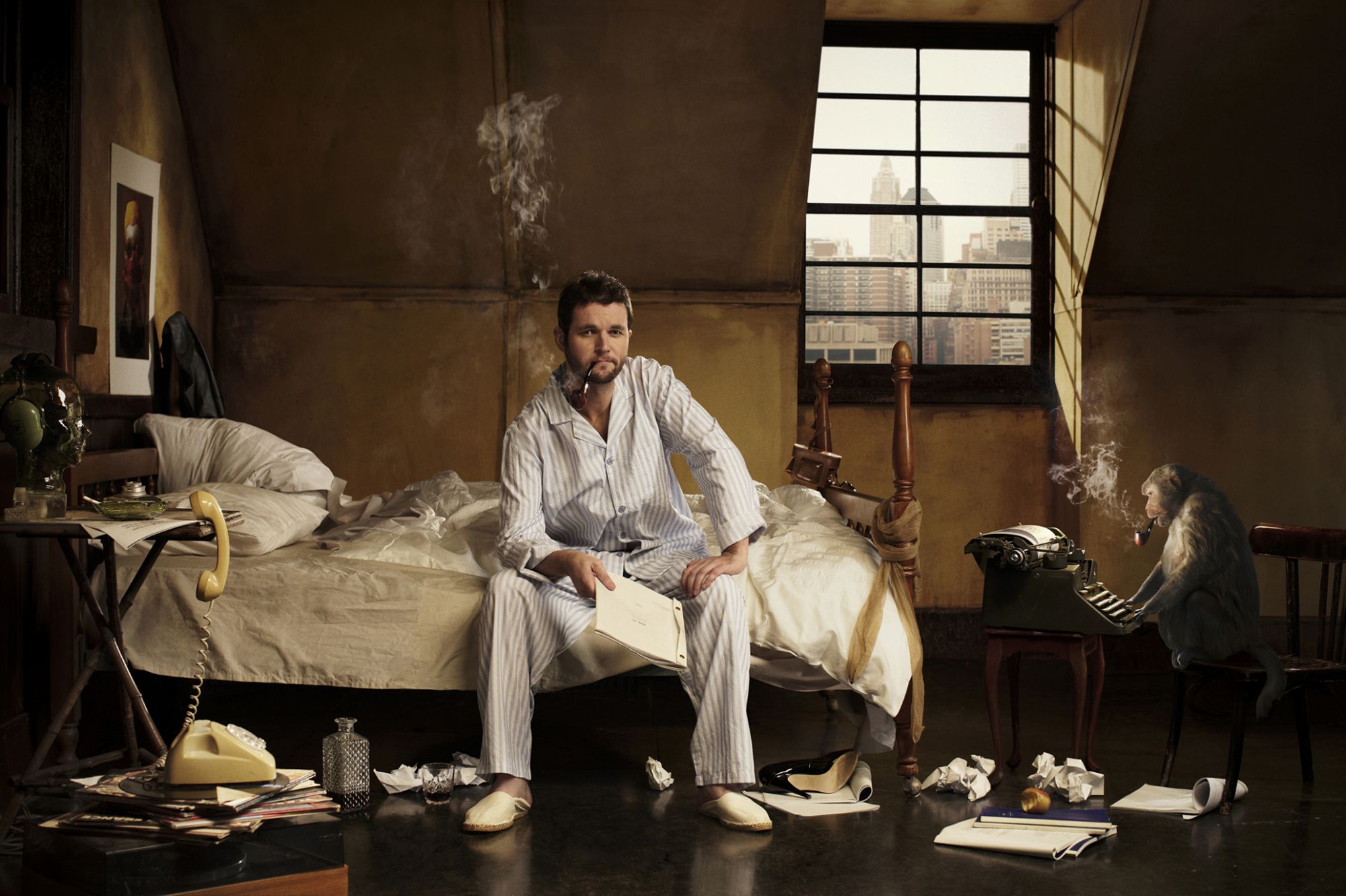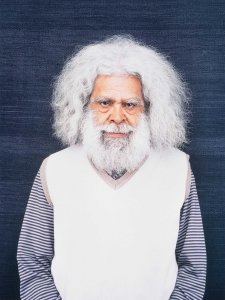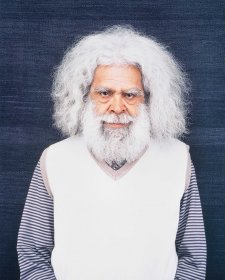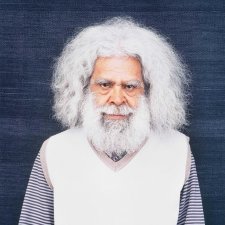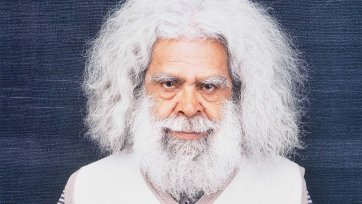Luke Doolan, Oscar-nominated film director and co-founder of Blue-Tongue Films, is shown here in his natural creative habitat. Doolan likes the Infinite Monkey Theorem, which suggests that monkeys randomly banging on typewriters for an infinite amount of time would eventually produce the works of Shakespeare or Hollywood (as also famously tested by Mr Burns in 'The Simpsons'). In this photograph, the same idea is applied for the Australian film industry - which meant only one monkey was afforded and at mates' rates! Special thanks to Toby & Pete, Debbie Muller, Emma Woods and Pascale Roux de Bezieux. Producer: Anne Robinson
Questions
1. How would you describe the atmosphere created by Gozin'a in her portrait of Luke Doolan?
2. While some elements of the portrait are digitally manipulated, the image was mostly created 'in camera, all in one frame'. How does this information change the way you look at the portrait?
3. Gozin'a nominates film as one of the influences on her work. What elements of filmmaking can you identify in this portrait?
The photographer and the portrait -
an interview
How do you define your own practice?
Portrait photographer.
Do you have a website or are you represented on a website?
alinagozina.com.au
What is your relationship to the subjects?
It's great to have an interest in and /or a connection with the person I am photographing. On the shoot things get very technical so it's usually precise and short. The connection is established prior to the shoot or, if you just meet the person at the shoot, you have a few minutes to make the connection. These few minutes are crucial as they can either make or break the shoot. I don't worry about what people think and want. I am so concentrated on what I need to get done that I don't get overwhelmed by a person standing in front of me. Maybe that is what saves me every time.
Was the photograph a result of a constructed or candid encounter?
None of my encounters are candid - they are all fabricated and constructed, that's how I like it. On the shoot, I let the shoot itself take charge and this allows me to deviate in an organic way from the constriction of the vision I had in mind. Wonderful things always happen on the shoot once I let go of the mad desire to recreate exactly what is in my head.
What are the ideas or themes underpinning your portrait?
I am fascinated by humanity, what moves us and why love comes harder to some people than to others.
Describe the technical aspects of your photograph?
The camera I used was a Canon 5D Mark II, 50 mm L series, f 1.2. The lighting was artificial. Through digital imaging we dropped in a NY view in the window and smoke for the monkey's pipe (the monkey was actually holding the pipe in her mouth on the shoot as it is shown in the photo - that part is real). We also intensified the smoke coming out of Luke's smoking pipe. And that is it. The rest was all in camera, all in one frame! I tried to avoid using Photoshop and digitising aspects of the image as much as I could. I appreciate the old school of photography which, to me, is the only school there is and should be.
How was the final print made? Is this print one of an edition?
Printed on metallic photo paper. There will be a few in the edition.
Describe your consideration of scale, mounting and framing in the presentation of your portrait?
I hate mounting and framing so I give it very little consideration. I go for the most durable and simplest presentation and something which is timeless. I need to change this bad habit.
Who would you nominate as your influences?
Many wonderful films and, of course, photography as well.
Do you have any advice for a beginning photographer (eg. students)?
Identify which genre you like and then copy what has been done before to perfection on all levels. Once you master the technical side of the "old masters", then you can create your own original work.
